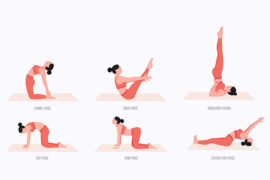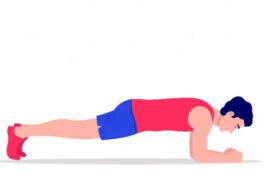Japanese workouts reflect a holistic approach to physical fitness, embodying a fusion of tradition, discipline, and mindfulness. Rooted in a culture that values overall well-being, these workouts extend beyond mere exercise, incorporating principles that promote a balanced and healthy lifestyle. From the rhythmic and controlled movements of traditional “taiso” exercises to the precision and focus of martial arts like Karate, Japanese fitness routines emphasize not only physical strength but also mental discipline. Integrating elements of cardio exercises such as high knees and burpees with the mindful eating practices of “hara hachi bu,” these Japanese workouts offer a comprehensive approach to achieving a trimmer tummy and cultivating a sustainable, health-conscious lifestyle.
While there may not be specific “Japanese workouts” per se, Japan does have a culture that values physical activity, healthy living, and holistic well-being. Here are some Japanese workouts and practices that you might find associated with Japanese fitness and wellness, which can contribute to a trimmer tummy:
1. Radio Taiso:
Japanese workouts as Radio Taiso is a set of warm-up exercises broadcasted on Japanese radio in the morning. These simple and rhythmic exercises include stretches and movements that can help improve flexibility and promote overall fitness, including core strength.
2. Hula-Hooping:
Hula-hooping is a popular exercise in Japan, and it’s often incorporated into fitness routines for toning the abdominal muscles. You can find classes or videos that teach hula-hooping techniques for a fun and effective core Japanese workouts.
3. Pilates and Yoga:
Both Pilates and yoga have gained popularity in Japan. These practices emphasize core strength, flexibility, and mindful movements. Many fitness studios offer classes that combine elements of traditional Japanese disciplines with these Japanese workouts.
4. Karate or Kickboxing:
Engaging in martial arts like Karate or kickboxing can provide an excellent full-body workout, including the core muscles. These Japanese workouts not only contribute to physical fitness but also embody discipline and focus.
5. Japanese Callisthenics:
Traditional Japanese callisthenics, or “taiso,” include bodyweight exercises that can be effective for toning the muscles, including the abdominal region. These exercises are often performed in a rhythmic and controlled manner.
6. Japanese Dance Workouts:
Join dance workout classes inspired by traditional Japanese dance forms. These can be energetic and engaging, providing a cardio workout while working on core muscles.
7. Hiking and Nature Walks:
Japan is known for its beautiful natural landscapes. Take advantage of this by incorporating hiking or brisk nature walks into your routine. Uphill walks can engage the core muscles, contributing to a trimmer tummy.
8. Bicycle Riding:
Cycling is a popular activity in Japan. Consider incorporating regular bicycle rides into your routine, whether outdoors or using a stationary bike. This can be an effective way to engage the abdominal muscles and burn calories.
9. Japanese Fitness Apps:
Explore Japanese fitness apps that offer Japanese workouts routines inspired by local fitness trends. These apps may provide guidance on exercises targeting the core muscles.
Mindful Eating Practices:
Hara Hachi Bu:
Practice “hara hachi bu” by eating until you are 80% full. Pay attention to your body’s signals and avoid overeating.
Slow and Enjoyable Meals:
Take your time during meals. Chew your food thoroughly and savor the flavors. This can help prevent mindless eating and promote better digestion.
Balanced Nutrition:
Embrace a balanced diet with a variety of nutrient-dense foods, including lean proteins, whole grains, fruits, and vegetables.
Hydration:
Stay hydrated by drinking plenty of water throughout the day. Sometimes, our bodies can confuse thirst with hunger.
Mindful Snacking:
Choose healthy snacks and be mindful of portion sizes. Opt for options like fruits, nuts, or yogurt.
Limit Processed Foods and Sugars:
Minimize the intake of processed foods and sugars. Focus on natural, whole foods for sustained energy.
Remember that consistency is key when it comes to fitness. It’s also crucial to combine Japanese workouts with a healthy and balanced diet for optimal results. If you’re new to exercise or have any health concerns, it’s advisable to consult with a fitness professional or healthcare provider before starting a new workout routine.
Disclaimer:
The information contained in this article is for educational and informational purposes only and is not intended as a health advice. We would ask you to consult a qualified professional or medical expert to gain additional knowledge before you choose to consume any product or perform any exercise.








